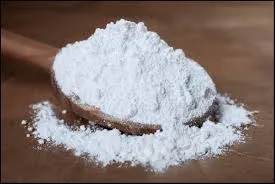
Fév . 19, 2025 00:39
Back to list
monosodium glutamate additive
Monosodium glutamate (MSG) has long been a subject of debate. As a key additive in various culinary products, it enhances flavor, eliciting a savory taste known as umami. The multifaceted nature of MSG makes it an intriguing subject for both consumers and manufacturers.
For manufacturers aiming for clean-label products, the inclusion of MSG can be viewed as a barrier. Consumers are increasingly seeking products with fewer artificial additives, which has sparked a trend towards natural and simple ingredients. Developers are responding by exploring alternatives like using naturally umami-rich ingredients, such as tomatoes, mushrooms, and aged cheese, which despite being less potent than MSG, meet clean-label demands. MSG also offers an economical advantage. The cost-effectiveness of MSG as a flavor enhancer means significant reductions in ingredient costs, particularly in large-scale food production. This is crucial for industries aiming to deliver quality products at competitive prices, allowing manufacturers to maintain the integrity of their products while adhering to tight budgets. A burgeoning area of interest is the role MSG plays in promoting satiety. Some research suggests that foods enhanced with MSG might influence appetite regulation. Enhancing palatability without adding significant calories could eventually herald MSG as a tool in the fight against obesity, though this potential remains under investigation. On the consumer front, awareness and education about MSG are crucial. Misinformation has led to unfounded fears, which continue to affect purchasing decisions. Companies should focus on transparent labeling and consumer education to address these misconceptions. Highlighting the benefits and safety of MSG can transform perceptions and potentially boost product acceptance. In conclusion, monosodium glutamate is more than just a flavor enhancer; it's a pivotal tool in modern food science that offers both challenges and opportunities. By integrating MSG in a context that prioritizes health, sustainability, and consumer education, manufacturers can harness its full potential. The dialogue surrounding MSG is evolving, mitigating past misconceptions, and highlighting its value in both culinary and economic terms. The ongoing exploration of its roles could establish MSG not just as an additive, but as an essential component of innovative food production.


For manufacturers aiming for clean-label products, the inclusion of MSG can be viewed as a barrier. Consumers are increasingly seeking products with fewer artificial additives, which has sparked a trend towards natural and simple ingredients. Developers are responding by exploring alternatives like using naturally umami-rich ingredients, such as tomatoes, mushrooms, and aged cheese, which despite being less potent than MSG, meet clean-label demands. MSG also offers an economical advantage. The cost-effectiveness of MSG as a flavor enhancer means significant reductions in ingredient costs, particularly in large-scale food production. This is crucial for industries aiming to deliver quality products at competitive prices, allowing manufacturers to maintain the integrity of their products while adhering to tight budgets. A burgeoning area of interest is the role MSG plays in promoting satiety. Some research suggests that foods enhanced with MSG might influence appetite regulation. Enhancing palatability without adding significant calories could eventually herald MSG as a tool in the fight against obesity, though this potential remains under investigation. On the consumer front, awareness and education about MSG are crucial. Misinformation has led to unfounded fears, which continue to affect purchasing decisions. Companies should focus on transparent labeling and consumer education to address these misconceptions. Highlighting the benefits and safety of MSG can transform perceptions and potentially boost product acceptance. In conclusion, monosodium glutamate is more than just a flavor enhancer; it's a pivotal tool in modern food science that offers both challenges and opportunities. By integrating MSG in a context that prioritizes health, sustainability, and consumer education, manufacturers can harness its full potential. The dialogue surrounding MSG is evolving, mitigating past misconceptions, and highlighting its value in both culinary and economic terms. The ongoing exploration of its roles could establish MSG not just as an additive, but as an essential component of innovative food production.
Latest news
-
Sodium Dichloroisocyanurate Safety Handling ProtocolsNewsJul.29,2025
-
Mining Chemicals for Copper Extraction Processes GuideNewsJul.29,2025
-
Fertilizer for Sale Shipping and Storage TipsNewsJul.29,2025
-
Dimethyl Disulfide as Sulfurizing AgentNewsJul.29,2025
-
Benzotriazole Safety Data Handling and Storage GuidelinesNewsJul.29,2025
-
Ammonium Bicarbonate Safety Handling Storage GuidelinesNewsJul.29,2025
-
The Transformative Role Of Trichloroisocyanuric Acid in Water TreatmentNewsJul.23,2025
HOT PRODUCTS
Hebei Tenger Chemical Technology Co., Ltd. focuses on the chemical industry and is committed to the export service of chemical raw materials.
-

view more DiethanolisopropanolamineIn the ever-growing field of chemical solutions, diethanolisopropanolamine (DEIPA) stands out as a versatile and important compound. Due to its unique chemical structure and properties, DEIPA is of interest to various industries including construction, personal care, and agriculture. -

view more TriisopropanolamineTriisopropanolamine (TIPA) alkanol amine substance, is a kind of alcohol amine compound with amino and alcohol hydroxyl, and because of its molecules contains both amino and hydroxyl. -

view more Tetramethyl Thiuram DisulfideTetramethyl thiuram disulfide, also known as TMTD, is a white to light-yellow powder with a distinct sulfur-like odor. It is soluble in organic solvents such as benzene, acetone, and ethyl acetate, making it highly versatile for use in different formulations. TMTD is known for its excellent vulcanization acceleration properties, which makes it a key ingredient in the production of rubber products. Additionally, it acts as an effective fungicide and bactericide, making it valuable in agricultural applications. Its high purity and stability ensure consistent performance, making it a preferred choice for manufacturers across various industries.











